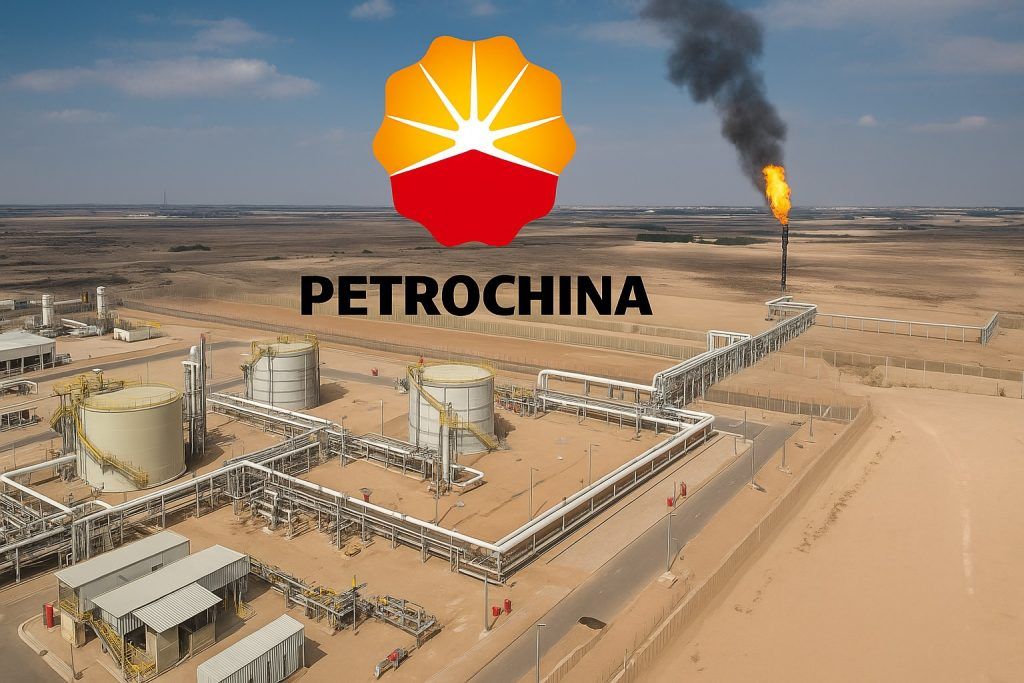- Post-Earnings Price Spike: Liberty Energy (NYSE: LBRT) shares closed around $15.32 on October 17, 2025, after an intraday high in the mid-$15s – marking a 28% single-day jump following the company’s Q3 earnings release [1]. This huge rally (from a prior close of ~$11.94) came on unusually heavy trading volume and far outpaced the broader market [2] [3]. Even after climbing roughly 15% in October, LBRT remains well below its 52-week high of ~$23.58 and is still down significantly year-to-date [4].
- Mixed Q3 2025 Results:Revenue: $947 million for Q3, down ~17% year-on-year [5]. Earnings: An adjusted net loss of $0.06 per share (slightly worse than the breakeven forecast) [6]. However, one-time tax benefits produced a surprise GAAP net profit of $43 million (≈$0.26/share), beating the near-zero consensus [7]. Liberty also hiked its quarterly dividend by 13% to $0.09 per share – an unusual move in a down quarter, interpreted as a signal of management’s confidence [8]. The new dividend lifts the annual yield to roughly 2.4% at current prices [9] [10].
- 2025 Slump and Oilfield Headwinds: Prior to this earnings rebound, LBRT had plunged over 40% in 2025 amid a sharp downturn in North American fracking activity [11]. Oil prices hovering around $60–$62/barrel (Brent ~$61) and oversupply fears have caused exploration and drilling budgets to shrink [12]. U.S. rig counts and well completions fell markedly this year, directly squeezing Liberty’s shale-focused business. While diversified oilfield peers (e.g. Halliburton, Schlumberger) with international projects held up better, Liberty’s concentrated exposure to the U.S. onshore market made its stock an underperformer [13].
- Strategic Tech & Power Pivot: Liberty is responding by diversifying beyond traditional fracking services. In Q3 it launched “Forge,” an AI-driven optimization tool to boost operational efficiency, and achieved record pumping productivity and safety metrics [14]. The company is also expanding into power generation: Liberty’s on-site power capacity is set to exceed 1 gigawatt by 2027 to serve energy-intensive clients like data centers [15]. Reflecting this pivot, Liberty appointed Alice Yake – an energy infrastructure veteran – to its Board in October to help drive growth in the Liberty Power Innovations division [16]. These moves aim to buffer Liberty’s earnings with new revenue streams as the core oilfield business navigates a cyclical slump.
- Analyst Outlook and Valuation: Wall Street remains cautious on LBRT despite the rally. The consensus rating is essentially “Hold”, with recent 12-month price targets ranging from $12 to $19 [17]. The average target sits in the mid-$14–15 area – roughly where the stock trades now [18]. For example, Barclays downgraded Liberty to Equal Weight and cut its target to $12 ahead of earnings [19], citing near-term margin pressure, while Stifel still sees upside to $19 (Buy rating) on a longer-term recovery bet [20]. At ~$15, Liberty’s market cap is about $2.5 billion and it trades around 0.6× sales and 11–13× trailing earnings [21]. However, with profits currently near breakeven, forward P/E is very high – a reflection that meaningful earnings growth may not materialize until industry conditions improve [22].
Earnings Spark a Relief Rally
Liberty Energy’s latest earnings report shocked the market – in a good way. The oilfield services provider had been telegraphing a tough quarter, and analysts expected essentially no profit [23]. Indeed, Liberty’s Q3 2025 revenue fell to $947 million (down almost 17% YoY) amid weaker drilling activity, and adjusted earnings were slightly negative [24]. Yet investors zeroed in on the quarter’s silver linings: thanks to a tax item, Liberty managed to post a small GAAP profit (~$43M), and management boosted the dividend payout by 13% simultaneously [25] [26]. This combination of an earnings beat (relative to grim expectations) and a reward to shareholders caught the market by surprise. As a result, traders piled in and LBRT stock soared ~28% intraday on October 17, closing at $15.32 vs. $11.94 the day before [27]. The ~$3.4 per share gain in one day added roughly half a billion dollars to Liberty’s market value overnight [28].
Such a leap is dramatic for a mid-cap energy stock, and it came on abnormally heavy volume (several million shares traded, compared to ~1 million on an average day) [29]. The buying frenzy suggested that many investors had braced for even worse news and were relieved by Liberty’s resilience. “Better-than-feared” results often spark relief rallies, and that’s exactly what played out. Short-covering may have contributed as well – with LBRT down over 40% YTD before earnings, bearish traders likely scrambled to cover positions once the narrative flipped positive.
Why was the reaction so euphoric? In part because Liberty’s management sent a clear signal of optimism. Hiking the dividend in a down-cycle is an unusual show of confidence. One post-earnings analysis noted that raising the payout during a slump demonstrates “management’s commitment to shareholder returns,” which helped fuel the buying [30]. In the company’s words, CEO Ron Gusek emphasized that Liberty delivered solid results “despite a slowdown in … activity and pricing pressure,” and that the team achieved record efficiency and safety benchmarks in the field [31]. He acknowledged ongoing headwinds but stated “we are well positioned to capitalize on opportunities when conditions improve” [32]. These remarks – along with the surprise profit and dividend boost – suggested to investors that perhaps the worst is over for Liberty’s downcycle.
Notably, market sentiment had been extremely bearish on Liberty prior to this report. The stock had been “drifting lower for months” and was priced for a severe downturn [33]. By October 16, on the eve of earnings, LBRT closed under $12 (~$2.0B market cap) [34]. That low valuation implied traders expected prolonged struggles. The Q3 news, while not strong on the surface, offered glimmers of hope that Liberty can weather the storm. In short, the earnings provided encouraging news in an otherwise dreary environment, triggering a relief rally that erased a chunk of Liberty’s recent losses [35].
A Brutal Year for Liberty – Until Now
It’s important to put Liberty’s sudden comeback in context: 2025 has been brutal for the company. Even after October’s bounce, LBRT stock is still down roughly 30–40% year-to-date, a far steeper drop than the broader energy sector [36]. In fact, over the six months before this rally, Liberty’s share price plunged ~41%, drastically underperforming both the oil & gas industry (which was roughly flat to slightly up) and even most oilfield service peers [37]. For instance, Halliburton and Schlumberger – larger rivals with international exposure – fell only ~10% or less over a similar period [38], while Liberty sank by four times that rate. This outsized decline points to company-specific challenges on top of the general industry downturn [39] [40].
The core issue has been a sharp contraction in U.S. drilling and completion activity in 2025. As an onshore fracking specialist, Liberty is highly exposed to the North American shale patch. Oil producers curtailed spending this year amid soft prices (Brent crude spent much of the fall near $60) and fears of oversupply [41]. The U.S. rig count recently slid to ~414, down from 480+ a year ago [42], and the number of active frac fleets hit multi-year lows (around 160 spreads in use) as of October [43]. In practical terms, this means less work for pressure-pumpers like Liberty. The company’s revenues and margins have been under intense pressure, echoing what happened in past oil downturns. Liberty’s adjusted EBITDA in Q3 was $128M, down from over $270M a year earlier [44] [45]. Profitability has dwindled: net profit margins slipped to ~5% recently from 8%+ last year [46] [47].
Liberty’s management hasn’t been shy about the challenges. In previous quarters they even withdrew full-year guidance, citing low visibility in a volatile environment [48]. They warned of customers delaying projects and competitors cutting prices to win scarce jobs – “unconstructive pricing behavior,” as Liberty put it, which is eroding service pricing across the industry [49]. The company also decided to pause share buybacks in Q2 and Q3 (after repurchasing ~$24M of stock early in the year) to conserve cash during the storm [50] [51]. All these are classic symptoms of a cyclical downturn in oilfield services.
The result: by early October, investor sentiment hit a low. One analysis noted Liberty’s 45% stock plunge outpaced even other struggling frackers like ProPetro (down ~40%) and far exceeded declines at diversified peers [52]. Such underperformance suggested the market believed Liberty had deeper issues beyond the industry cycle – whether due to strategic missteps or its concentrated focus on fracking. This was the backdrop when Q3 earnings landed: expectations were so depressed that any positive surprise could spark a rebound. And that’s exactly what happened.
Even after popping back into the mid-teens, however, LBRT is still trading at a fraction of its former highs. At ~$15, the stock remains 35% below its 2022 peak and well under the levels it enjoyed during the last oil upswing (when Liberty’s market cap was $7–8 billion, vs. ~$2.5B now) [53]. In other words, plenty of lost ground remains to be recovered if the company can get back on track. Risk-averse investors are not out of the woods yet – the stock’s fate is still tied to oilfield conditions in the coming quarters. But the Q3 rally shows that even a glimmer of good news can go a long way for a beaten-down stock.
Company Moves: Efficiency, Technology, and Power Plays
Facing a tough market, Liberty isn’t just waiting for oil prices to rebound – it has been pivoting its strategy to emerge stronger. A key focus is on technology and efficiency gains in its core operations. During Q3, Liberty deployed next-generation digiPrime™ electric frac fleets, which delivered significant fuel savings and maintenance cost reductions [54]. The company touted that several fleets set new records for pumping hours and proppant volumes pumped, thanks to these upgrades [55] [56]. Liberty has also embraced automation: its StimCommander software (an AI-driven control system for frac pumps) improved response times by ~65% and boosted pumping efficiency by 5–10%, according to CEO Gusek [57] [58]. Essentially, Liberty is using tech innovations to do more with less – a crucial advantage when every dollar counts. Gusek noted the team “managed to do more with less” by cutting costs and leveraging such efficiencies to offset much of the revenue decline [59].
Perhaps the most intriguing initiative is Liberty’s expansion into power generation and energy infrastructure. Through its Liberty Power Innovations arm, the company provides on-site power solutions (e.g. mobile natural gas generators, battery systems) for commercial and industrial clients. Liberty sees big opportunities here: demand for reliable, off-grid power is rising with trends like data centers, crypto mining, and LNG facilities. In Q3, Liberty announced plans to secure over 1 GW of power capacity by 2027 to meet growing customer interest [60] [61]. To put 1 gigawatt in perspective – that’s roughly the output of a nuclear reactor or a large gas-fired plant. Liberty’s vision is to offer turnkey energy solutions (power + fuel + grid integration) for clients that need dedicated, flexible electricity supply [62].
As part of this push, Liberty has made small acquisitions (e.g. it closed a $19.6M deal for IMG Energy Solutions to expand distributed power offerings) [63], and, notably, it just added Alice Yake (Jackson) to its Board of Directors. Yake is a former utility executive with decades of experience in power generation and grid infrastructure [64]. By bringing her on board, Liberty signals that its power business is now a strategic priority. “Alice’s background in energy infrastructure and power generation aligns with our growth strategy,” Gusek commented on the appointment [65]. Analysts view this diversification positively, as it could give Liberty a new growth engine outside the volatile oilfield cycle [66] [67]. However, these ventures will take time to scale up. Revenues from new power projects (including a partnership in small-scale nuclear power for data centers) aren’t expected until 2027+ [68]. In the meantime, Liberty’s core fracking business still drives ~90% of revenue, so the company must navigate the current downturn successfully to reap longer-term benefits from its tech and power investments.
In terms of financial management, Liberty is maintaining a relatively conservative stance. The balance sheet is in decent shape: as of Q3, the company had about $13 million in cash and $253 million in debt drawn on its credit facility [69]. Net debt is modest relative to equity, and leverage ratios remain low (debt-to-equity ~0.18, per MarketBeat) [70]. Liberty even refinanced its credit line in July with a new $750M facility, improving liquidity [71] [72]. The company did continue paying dividends (about $13M paid in Q3) and has a $750M share buyback authorization in place [73] [74]. However, as noted, management paused repurchases during the worst of 2025’s turmoil, prioritizing cash preservation [75]. This discipline in capital allocation – balancing investments vs. shareholder returns – is being closely watched by investors. Now, with the dividend increase and a stabilizing outlook, questions arise whether Liberty might resume buybacks in 2026 if cash flows improve. For now, management’s message is one of caution with a long-term focus: invest in strategic growth (like technology and power) while maintaining financial flexibility in a tough market.
Street Sentiment: Cautious Optimism or False Dawn?
Despite Liberty’s dramatic jump, analyst sentiment on the stock is mixed. The consensus rating hovers between Hold and Sell, reflecting uncertainty about the near-term outlook [76] [77]. According to Reuters data, the average rating score is about 2.5/5 (with 5 = Strong Buy), meaning most analysts are neutral to slightly negative [78]. Price forecasts similarly span a wide range. MarketBeat reports that as of mid-October, two analysts rate LBRT a Strong Buy, two say Buy, and ten have it as a Hold – with no outright Sell ratings published [79]. The average price target is roughly $14.85 per share [80], essentially where the stock traded after the earnings spike. StockAnalysis data likewise shows an average target around $15.15 (median ~$14), with a low of $12 and a high of $20 among about 10 analysts [81]. In short, Wall Street on the whole is not forecasting big moves for Liberty’s stock over the next year – expecting it to remain in the mid-teens.
Several high-profile analysts trimmed their outlook on Liberty going into this earnings. For example, Barclays analyst Eddie Kim downgraded LBRT to “Equal Weight” (Hold) on October 13 and cut his 12-month price target from $14 to $12 [82] [83]. Barclays had previously been bullish, so this reversal grabbed attention. The downgrade was driven by concerns that Liberty’s margins and U.S. activity would stay soft into 2025. Zacks Investment Research also recently slapped Liberty with a “Sell” rank (their second-worst rating) due to “weak margins and uncertain oil demand”, essentially advising investors to avoid the stock until trends turn around [84]. On the other hand, not all analysts are pessimistic: Piper Sandler’s Derek Podhaizer has a Neutral stance with a $13 target (he actually maintained that target, only slightly lowering it from $14 in August) [85]. And Stifel’s Stephen Gengaro remains outright bullish – he rates LBRT a Buy and recently set a $19 target (down from $20 prior) [86]. That $19 is the high end of the street and implies significant upside if it materializes.
What’s behind these divergent views? It often comes down to time horizon and oil price assumptions. Bears point out that Liberty’s valuation is misleadingly low on trailing metrics – e.g. a P/E around 11–12 – because earnings have collapsed and might not recover soon [87] [88]. In fact, Liberty’s forward P/E ratio (based on next 12 months earnings) skyrocketed above 300 recently [89], as consensus EPS for the coming year is only a few cents (near breakeven) [90] [91]. This indicates the market doesn’t expect substantial profit in the immediate future. Put simply: Liberty looks cheap until you consider that its near-term earnings are almost nil. That justifies caution. Furthermore, macro headwinds remain a worry – Citigroup and Wells Fargo have noted that U.S. exploration spending is likely to stay muted through at least mid-2025, which could keep pressure on all oilfield service stocks [92]. Liberty, being heavily U.S.-focused, is especially exposed if shale activity continues to stagnate.
On the optimistic side, bulls argue that the stock’s drubbing is overdone if you have a medium-term outlook. They highlight Liberty’s strong fundamentals: the company has a decent balance sheet (low debt, manageable leverage) and trades at only about 0.5× annual revenue – a depressed price-to-sales ratio by historical standards [93]. In past cycles, oilfield service firms have often traded at 1× or more sales when the industry outlook improved. So value investors see a potential re-rating opportunity if Liberty can even modestly rebound. Additionally, Liberty’s investments in AI, automation, and power could make it a more resilient and diversified business coming out of this downturn [94] [95]. Those innovations might give Liberty a competitive edge (higher efficiency, new revenue streams) that eventually boosts margins above peers. Some analysts also note that global oil demand is still on an upward long-term trend, and if supply/demand rebalances by 2026 as forecast, there could be a surge in fracking needs down the line [96]. In such a scenario, Liberty’s stock might be worth significantly more. As TS2.tech summarized, “if oilfields recover, LBRT could eventually be worth a multiple of current levels once frac activity turns up” [97]. But that remains a big “if.”
Forecasts and Outlook: Sideways Near-Term, Optionality Long-Term
Looking ahead, the near-term outlook for LBRT is guarded. Most industry forecasters don’t expect a major rebound in U.S. fracking activity until at least late 2026 [98] [99]. Liberty’s own projections (shared in its filings and conference call) assume the current global oil glut will peak by mid-2026, with North American completions activity gradually recovering by the end of 2026 [100] [101]. That’s a long runway of potentially anemic demand to get through. In the interim – through 2025 and into mid-2026 – LBRT may effectively “tread water”. Absent a sustained rise in oil prices well above $65/bbl, oil producers are likely to remain cautious, which caps the upside for Liberty’s services [102]. The company might eke out profits from cost cuts and steady maintenance work, but robust growth will be hard to come by until its customers (E&Ps) boost spending again. Investor sentiment could thus swing on incremental data – monthly rig counts, oil price movements, and Liberty’s quarterly results will be key indicators. Any sign that drilling activity is stabilizing (or declining further) could move the stock accordingly, and we should expect continued volatility in LBRT’s price tied to such news.
From a technical analysis perspective, the recent surge has improved Liberty’s chart, but also left some questions. The stock’s sudden spike to the mid-$15s means it has broken out of the long stagnation in the $11–$12 range. Technicians note that $14 now looks like a support level (the area of the October gap-up), and near-term resistance appears around the $15.50–$16 zone – roughly the intraday highs post-earnings [103]. If LBRT can decisively push above $16 on strong volume, some traders see room toward the upper teens (next target ~$17–$18) [104]. However, lacking a new catalyst, a pullback or consolidation is also possible given the stock’s rapid gains. An advisable strategy many experts suggest is “buying on dips” if the stock retraces toward support (e.g. the ~$12–$13 area) [105], rather than chasing the rally. This aligns with cautious sentiment – the idea is to gain exposure if the stock weakens, betting on a longer-term turnaround, but not to assume the rally will run unabated. It’s worth noting that Liberty’s 50-day and 200-day moving averages sit around $11.5 and $11.9 respectively [106]; the stock is now well above both, signaling a potential trend reversal if it can sustain these levels. Technical momentum indicators turned bullish with the spike, but the true test will be whether LBRT can hold onto its gains in the coming weeks.
Longer-term, the bull vs. bear thesis for Liberty will likely be resolved by macro conditions. If the oil cycle indeed turns up by 2026 – i.e. global demand growth absorbs the current glut, lifting oil prices and prompting U.S. producers to drill more – then Liberty stands to benefit outsizedly. In that scenario, there could be a shortage of high-end frac equipment (since many competitors have scrapped older gear during the slump [107]), giving pricing power back to firms like LBRT. Liberty’s investments in next-gen fleets and power services could pay off exactly as demand returns, allowing it to capture market share or charge premium rates. Under those bullish conditions, it’s not hard to envision Liberty’s stock eventually climbing back into the $20s. In contrast, if oil stays low and U.S. shale remains in the doldrums beyond 2026, Liberty’s growth story could stall out. The company would then be reliant on its new business ventures (power, etc.) which might not offset weak core earnings for years. In that bearish case, analysts warn the stock could “languish or fall back toward the $10–$12 range” over time [108].
As of now, the median Wall Street target (~$14) reflects only a modest upside (or even slight downside) from current levels [109]. It suggests analysts see Liberty as roughly fairly valued for the near term, given all the uncertainties. But they also acknowledge a wide cone of outcomes – essentially, Liberty Energy has become a bet on an oilfield recovery. For investors with conviction that the oil cycle will turn, LBRT offers a potentially undervalued rebound play, bolstered by a healthy balance sheet and innovative initiatives. Those investors are heartened by management’s confidence (e.g. the dividend raise) and Liberty’s ability to stay profitable even at the trough of the cycle. On the other hand, for those who see continued oversupply or structural shifts (like the U.S. shale plateauing), Liberty might be a value trap, appearing cheap but lacking near-term catalysts.
Bottom Line
Liberty Energy’s 28% surge after Q3 2025 earnings was a dramatic reminder of how quickly sentiment can change in the stock market. The company delivered a few positive surprises – a small profit, a dividend hike, record efficiencies – that broke the negative narrative and sparked a wave of buying [110] [111]. This has given Liberty a new lease on life heading into year-end. Management is striking an optimistic tone, insisting the current downturn is temporary and doubling down on technology and strategic diversification to emerge stronger [112] [113]. Investors have accordingly become more hopeful in the short run. However, it’s clear that big challenges remain. Liberty’s fate is still tied to external forces like oil prices and drilling budgets, which won’t likely improve overnight. The stock’s recent rally reflects a relief that things weren’t worse, rather than a confirmation of robust growth ahead [114].
For now, all eyes are on the horizon. The coming quarters will test whether Liberty can continue to execute – maintaining cost discipline, protecting its margins, and pushing its new initiatives – while waiting out the industry slump. Any further deterioration in oil demand or pricing could reignite bearish sentiment, whereas signs of stabilization (or additional shareholder-friendly moves) might bolster the bull case. In the meantime, Liberty offers a cautious balance of risk and reward. The company’s low valuation and proactive strategy give it rebound potential if and when the cycle turns. But until the broader oilfield outlook brightens, LBRT is likely to trade choppily, with its stock performance driven by incremental news and investor mood swings. As one analyst put it, “Liberty Energy’s story as of late 2025 is one of short-term pain, long-term potential” [115]. After a year of pain, shareholders are finally seeing some gain – and will be watching closely to see if this tentative turnaround can build into a sustained recovery.
Sources: Connected financial news and analysis including Liberty’s official Q3 2025 results and conference call commentary [116] [117], TS2.tech deep-dive reports [118] [119] [120], MarketBeat/Reuters market data [121] [122], StocksToTrade technical insights [123], and Zacks/Nasdaq industry commentary [124] [125]. All statistics are as of October 20, 2025. The article is for informational purposes and does not constitute investment advice.
References
1. ts2.tech, 2. ts2.tech, 3. ts2.tech, 4. ts2.tech, 5. ts2.tech, 6. ts2.tech, 7. ts2.tech, 8. ts2.tech, 9. www.marketbeat.com, 10. www.marketbeat.com, 11. ts2.tech, 12. ts2.tech, 13. ts2.tech, 14. ts2.tech, 15. ts2.tech, 16. ts2.tech, 17. www.marketbeat.com, 18. stockanalysis.com, 19. ts2.tech, 20. ts2.tech, 21. www.marketbeat.com, 22. ts2.tech, 23. ts2.tech, 24. ts2.tech, 25. ts2.tech, 26. ts2.tech, 27. ts2.tech, 28. ts2.tech, 29. ts2.tech, 30. ts2.tech, 31. ts2.tech, 32. ts2.tech, 33. ts2.tech, 34. ts2.tech, 35. ts2.tech, 36. ts2.tech, 37. ts2.tech, 38. ts2.tech, 39. www.nasdaq.com, 40. www.nasdaq.com, 41. ts2.tech, 42. ts2.tech, 43. ts2.tech, 44. www.nasdaq.com, 45. www.nasdaq.com, 46. www.marketbeat.com, 47. ts2.tech, 48. www.nasdaq.com, 49. www.nasdaq.com, 50. www.stocktitan.net, 51. www.nasdaq.com, 52. www.nasdaq.com, 53. ts2.tech, 54. ts2.tech, 55. ts2.tech, 56. ts2.tech, 57. investors.libertyenergy.com, 58. investors.libertyenergy.com, 59. ts2.tech, 60. ts2.tech, 61. investors.libertyenergy.com, 62. investors.libertyenergy.com, 63. www.stocktitan.net, 64. ts2.tech, 65. ts2.tech, 66. markets.financialcontent.com, 67. markets.financialcontent.com, 68. www.nasdaq.com, 69. ts2.tech, 70. www.marketbeat.com, 71. www.stocktitan.net, 72. www.stocktitan.net, 73. www.stocktitan.net, 74. www.stocktitan.net, 75. www.stocktitan.net, 76. ts2.tech, 77. ts2.tech, 78. ts2.tech, 79. www.marketbeat.com, 80. www.marketbeat.com, 81. stockanalysis.com, 82. stockanalysis.com, 83. stockanalysis.com, 84. ts2.tech, 85. www.marketbeat.com, 86. ts2.tech, 87. www.marketbeat.com, 88. ts2.tech, 89. ts2.tech, 90. stockanalysis.com, 91. stockanalysis.com, 92. ts2.tech, 93. ts2.tech, 94. ts2.tech, 95. ts2.tech, 96. ts2.tech, 97. ts2.tech, 98. ts2.tech, 99. ts2.tech, 100. ts2.tech, 101. ts2.tech, 102. ts2.tech, 103. stockstotrade.com, 104. stockstotrade.com, 105. stockstotrade.com, 106. www.marketbeat.com, 107. www.nasdaq.com, 108. ts2.tech, 109. stockanalysis.com, 110. ts2.tech, 111. ts2.tech, 112. investors.libertyenergy.com, 113. investors.libertyenergy.com, 114. ts2.tech, 115. ts2.tech, 116. investors.libertyenergy.com, 117. investors.libertyenergy.com, 118. ts2.tech, 119. ts2.tech, 120. ts2.tech, 121. www.reuters.com, 122. www.marketbeat.com, 123. stockstotrade.com, 124. www.nasdaq.com, 125. www.nasdaq.com







